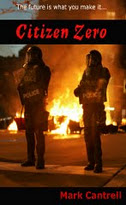First city of film
Bradford is no stranger on the international scene, but that was in its heyday as the centre of the global wool trade. Now it’s gained another 15 minutes in the limelight of the world stage, writes Mark Cantrell, thanks to its new status as the world’s first UNESCO City of Film
THE city of Bradford is an easy place in which to become disillusioned, said the writer J.B Priestley. That may be so, but the curmudgeonly man of letters might have a twinkle in his eye to learn that the city of his birth has scooped the status as the world’s first City of Film.
So, forget Cannes, don’t stowaway to Hollywood, make your way to the Pennines instead. Surprisingly, Bradford has had rather a heady engagement in the movie-making world, albeit ‘behind the scenes’, so it is quite easy to be surprised not just by the City of Film status, but by the rich history that led to it winning the award. Even the late J.B Priestley might have been surprised, but then again maybe not, since his son Tom is involved in the business as a film editor.
In J.B’s day, ‘real men’ were forging their fortunes in the heady world of international business, when Bradford was the centre of the global wool industry. That’s when Bradford was a thriving – and curiously cosmopolitan – industrial city. It wasn’t just a city of dark satanic mills where workers combed the wool, spun the yarn, wove the cloth and dyed the fabric – but all the associated endeavours of commerce and commodity trading that made Bradford a city of significance.
In this world of hard dealing woolmen, ‘Worstedopolis’ as the city was known, there was no place for arts as a real endeavour: art was a hobby and business was the world. Little wonder, for the novelist and playwright Priestley that it was an easy place to become disillusioned.
As it was then, so it is today, but the reasons are vastly different to those of Priestley’s days. Bradford is no longer that engine of commerce and trade, weaving fortunes out of raw wool. No, the city’s heyday as an industrial dynamo has long gone, and with it has gone its sense of purpose and direction. For ordinary Bradfordians, for all the fierce pride the place may invoke, it has gone through enough ups and downs to generate perhaps more than disillusionment – but an unhealthy dose of cynicism.
Globalisation wasn’t the buzz word in those post-war years when Britain’s industrial capacity went into decline and the wool trade returned to its global roots; no longer to beat a path to Bradford’s door to have its wool processed and commoditised and traded on. The city’s self-made reason to exist faded away, and like many Northern cities, it struggled to find for itself a place – to be a place – in the post-industrial, post-textile era.
So it has staggered on through the late 20th Century and into the 21st Century, still looking to regenerate, never quite taking off, stumbling onwards into an uncertain future. Unlike some of the great Northern cities like Manchester and Leeds, which managed to reinvent themselves and thrive beyond the heyday of their industries, Bradford has never quite found its way forward.
After so many false dawns, regeneration mistakes and failures, bad faith and political mediocrity, it is perhaps little wonder that a cynicism has brooded deep into the core of the city’s soul. For many outsiders, it doubtless comes across as a desperate self-loathing, or even just a plain old miserable outlook, but it is perhaps more accurately considered the shadow of anger that comes from wounded civic pride.
There’s a fierce loyalty in the city, after all, that will come as a surprise to those who have heard the dour dislike commonly expressed of Bradford by Bradfordians; but the strength of feeling invoked is fired by the attachment to the place – and by a deep well of disappointment. Bradford and Bradfordians have seen too many glowing promises evaporate to mist over the years, to ever fully have complete faith in the rewards said to be waiting over the horizon.
For all that, Bradford has always been a city that hides its light under a bushel – whether that was in those stern days of hard business acumen when real men forged their fortunes, or in these latter years of its efforts to pull itself out of the post-industrial doldrums. Bradford is a curmudgeonly town, with a dark frown on its features, and a dour visage that likes to take advantage of those who take it at face value; beware that mischievous twinkle in the eye of Bradford’s vision, for it has a wicked humour.
So, as if in the spirit of that down-to-earth amusement, it becomes the world’s first City of Film, beating the likes of Cannes, in an honorific bestowed by UNESCO as part of its Creative Cities Network. And therein does the city have a laugh, for the title reveals some of that creative light hidden under its bushel. Bradford has a lengthy and healthy association with the moving image art, as it does with literature and theatre – hear old J.B. chuckling at that one.
Bradford, indeed, has never been purely a textile city; any definition based around that trade whether in its heyday or in its post-industrial decline is a summation made in unwise haste.
“Bradford is one of the rare cities that forge their cultural identity and integrity through the medium of cinema,” said a spokesperson for UNESCO. “Film has a central role in the city’s development and regeneration schemes, through concrete plans where it is used as a cultural tool in harmonising community relations and maintaining balance between creativity and economic development.
“The cinema connections in the city are both historical and continuous with efforts to preserve, promote and enrich the heritage of film as well as to develop constructive links between society and media. The city’s profile as a multicultural centre for film with a diversity of outreach initiatives for different ethnic groups with strong links to Asian films was also appreciated.”
Simon Beaufoy, the screenwriter for Danny Boyle’s Oscar winning movie Slumdog Millionaire, was born and bred in Bradford, so he was understandably chuffed. “This is a testimony to the city’s dedication to the film and media industry,” he said. “Not only has Bradford played a crucial role in the story of cinema and helped to shape its history, it has inspirational plans to enhance its future relationship with film, which will benefit the local community and the industry at large. It is with pride, as a fellow West Yorkshireman, that we celebrate the UNESCO honour.”
UNESCO – the United Nations Educational, Scientific & Cultural Organisation – established the Creative Cities Network back in 2004 as an international initiative to support social, economic and cultural development in the member cities. Unlike, say Liverpool’s status as Europe’s Capital of Culture last year, it brings no direct economic grant awards, but becoming a Creative City is nevertheless intended to help encourage the development and benefits to recipients.
Bradford now joins 19 other cities across the globe as a member of this network, and becomes one of only three British cities to be a member of this ‘club’, alongside Edinburgh as the City of Literature and Glasgow as City of Music. The network is designed to promote the social, economic and cultural developments of cities in both the developed and developing world, allowing them to promote their local creative industries. If nothing else, it also allows civic dignitaries their moment in the limelight (as if they ever need an excuse):
“Receiving this award on behalf of the city of Bradford is an immensely proud moment for me, but more importantly, a very proud occasion for everyone in the district,” said the city’s Lord Mayor, Councillor John Godward. “Being the world’s first City of Film will really help develop the excellent work in film already being carried out in Bradford and also encourage the younger generations to get involved and nurture the talent here in the district.”
Councillor Anne Hawkesworth, City of Film Board member, as well as the council boss for environment and culture, added: “Becoming the world’s first City of Film is wonderful news for Bradford district, residents and the local economy. The council has long recognised the importance of the creative industries to the local economy and this accolade will help increase employment opportunities, provide greater international links, boost tourism and raise the district’s profile. I’m sure news of this will result in even more film makers wanting to come to Bradford to take advantage of the stunning scenery and locations we have to offer.”
Bradford has been home to the National Media Museum since the early 1980s, when it was established as the National Museum of Photography, Film & Television. The museum is one of the few unambiguous regeneration success stories in the city’s patchy, stop-start experiences of rebirth. While many might have seen it as a titbit thrown to Northerners by the metropolitan South in the beginning, the city has in fact very much embraced it and made the museum its own.
“For almost 20 years the National Media Museum has hosted renowned film festivals such as the Bradford International Film Festival, Bite the Mango and the Bradford Animation Festival,” said Colin Philpott, director of the National Film Museum. “These festivals have attracted acclaimed actors and directors who have all helped to make Bradford a unique destination for film. With the UNESCO City of Film designation, Bradford will now go on to achieve inspirational projects in film.”
The bid for City of Film status was put together by a partnership board consisting of the city council, the National Media Museum and Screen Yorkshire, with the support of the University of Bradford and a host of film organisations, commercial, creative and education bodies. The board was chaired by city-born Steve Abbott, who has produced such films as A Fish Called Wanda, Brassed Off and American Friends.
“As a proud Bradfordian, I am delighted by the UNESCO designation,” he said. “It is a great honour, not only for the city itself, but for all its citizens. Whilst it is Bradford’s heritage in film which has secured the designation, I am confident we can bring further credit to both Bradford and UNESCO with our on-going City of Film Project.”
Sally Joynson, chief executive of Screen Yorkshire, added: “To become the first ever UNESCO City of Film is a stunning achievement for Bradford and all those involved. This announcement further cements the region as being central to film and TV production in the UK.”
Bradford’s bid for the status showcased the city’s heritage in film production and its contribution to the film industry’s technical development; its film locations and its diverse society; and its celebration of film together with its commitment to sharing the enjoyment of film through the National Media Museum and its annual film festivals.
Having won the status, the city will be looking to encourage more film makers and enthusiasts to come to Bradford, in turn boosting the local economy. The City of Film partners will also look to build the city’s national and international profile, and also enhance people’s film making knowledge and develop film making potential.
“[Bradford] has a rich infrastructure for both film makers and film lovers. It has excellent cinemas, a national museum, and some great festivals,” said James Marsh, a BAFTA award winning director.
On that note, this is perhaps an apt moment to raise one on-going dramatic chapter in Bradford’s history of film – and that is with the continuing battle by campaigners to save the former Odeon cinema that sits adjacent to the Alhambra Theatre. The cinema was closed down in 2000 and has sat boarded up and empty ever since.
Officials have argued it is derelict, unsafe, and fit only for the wrecking ball, but campaigners opposed to its destruction have produced videos and photographs they consider powerful evidence that the building might be run down after nine years in mothballs, but is far from a ruin. They consider the building an important component of the city’s architectural, as well as its cultural heritage, and they want to see the old cinema reborn. In many respects, this battle that has brewed up around the former Odeon is a symbol of Bradford’s own struggle for rebirth, and it is painfully apt given the City of Film designation.
Campaigners from the Bradford Odeon Rescue Group (BORG) believe the Odeon has many a long year ahead of it contributing to Bradford – if it can be saved from the wrecking ball. One might think that with the City of Film status, there might also come a new lease of life for this old city centre cinema. It is regarded as a classic example of its type – no flea pit was this – but this is Bradford and, as mentioned, it has seen much promise and potential squandered over the years. One might reasonably wonder how this fits with UNESCO’s mention of “efforts to preserve, promote and enrich the heritage of film”. Therein lies a tale in itself.
For once, perhaps the cynicism of a city can prove unfounded, and the object of the campaigners efforts transcend its fate to become once more a flagship building floating on the optimism and hopes of ordinary Bradfordians. However, there are those who consider the Odeon’s long-standing intended demise as a dark kernel of hypocrisy rotting at the heart of Bradford’s City of Film win.
The battle to save the Odeon is another story, and perhaps the makings of a movie in itself, but back to the City of Film. Marsh continued: “I filmed a major production – Red Riding 1980 – in Bradford in the Autumn of 2008. We shot on location all over the city and in the surrounding countryside. We had amazing local support and hired a lot of our crew locally. Visually the city has much to offer and we had no problem finding exterior and interior locations to serve our story. Unlike say London or New York, it was easy and simple to get permission to shoot all over the city. I’d love to come back and shoot another film in the area.”
Amanda Nevill, director of the British Film Institute, said: “Film is society’s chosen medium in the 21st Century. In this wonderfully diverse society, it provides an engaging and compelling bridge between ages, cultures and societies. How wonderful Britain has a designated City of Film and how apt that it is Bradford.”
Bradfordian filmed and bred
Movie productions:
- Room at the Top: starring Simone Signoret and Laurence Harvey
- Billy Liar: starring Sir Tom Courtenay and Julie Christie
- Yanks: starring Richard Gere
- The Railway Children: starring Jenny Agutter
- The Dresser: featuring Oscar winner Albert Finney
- Monty Python’s The Meaning of Life: produced by Steve Abbott
- Rita, Sue & Bob Too: starring Kulvinder Ghir
- Fairytale: A True Story: starring Harvey Keitel and Peter O’Toole
- Private Function: starring Michael Palin
- The Damned United: starring Michael Sheen
- My Son the Fanatic: starring Rachel Griffiths
- L.A Without A Map: starring David Tennant
- Blow Dry: starring Alan Rickman and Natasha Richardson
- Like Minds: starring Toni Collette
- The Red Riding Trilogy was filmed on various sites in Bradford
- White Girl was filmed in various sites within the city
- The Royal was filmed at St Lukes Hospital, Bradford
- Emmerdale, filmed in Burley-in-Wharfedale
- Spooks: Code 9 was filmed at Bradford Police Station and other locations within the city
- Wuthering Heights was filmed at East Riddlestone Hall
- Sunday Life was filmed at Dalton Mills, Keighley
Every year the National Media Museum hosts the following film festivals in Bradford:
● Bradford International Film Festival
● Bite The Mango
● Bradford Animation Festival
The National Media Museum: www.nationalmediamuseum.org.uk
Bradford City of Film: www.bradford-city-of-film.com
Screen Yorkshire: www.screenyorkshire.co.uk
Mark Cantrell,
Stoke-on-Trent,
27 June 2009
Copyright © June 2009. All Rights Reserved.
Category: FEATURE



























0 comments:
Post a Comment